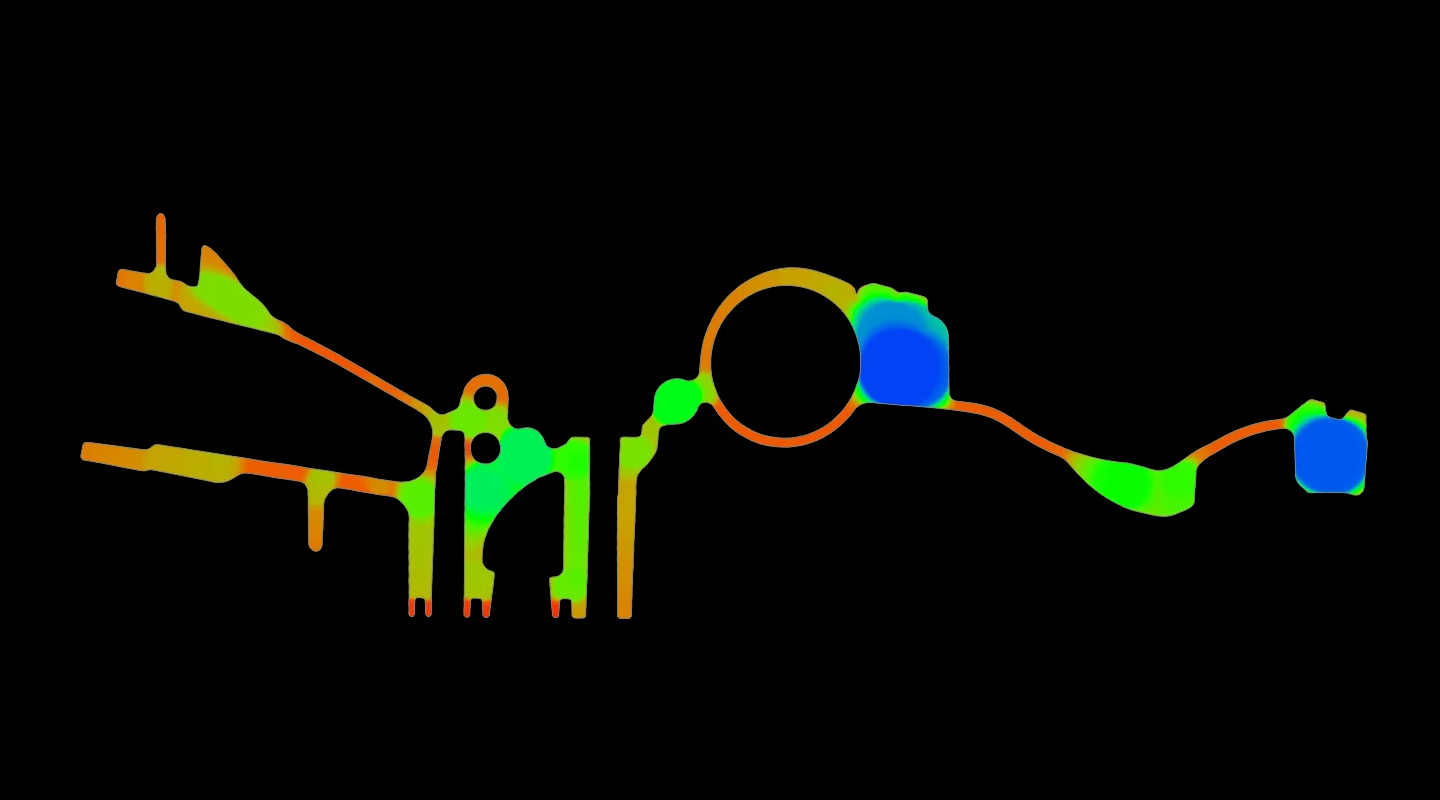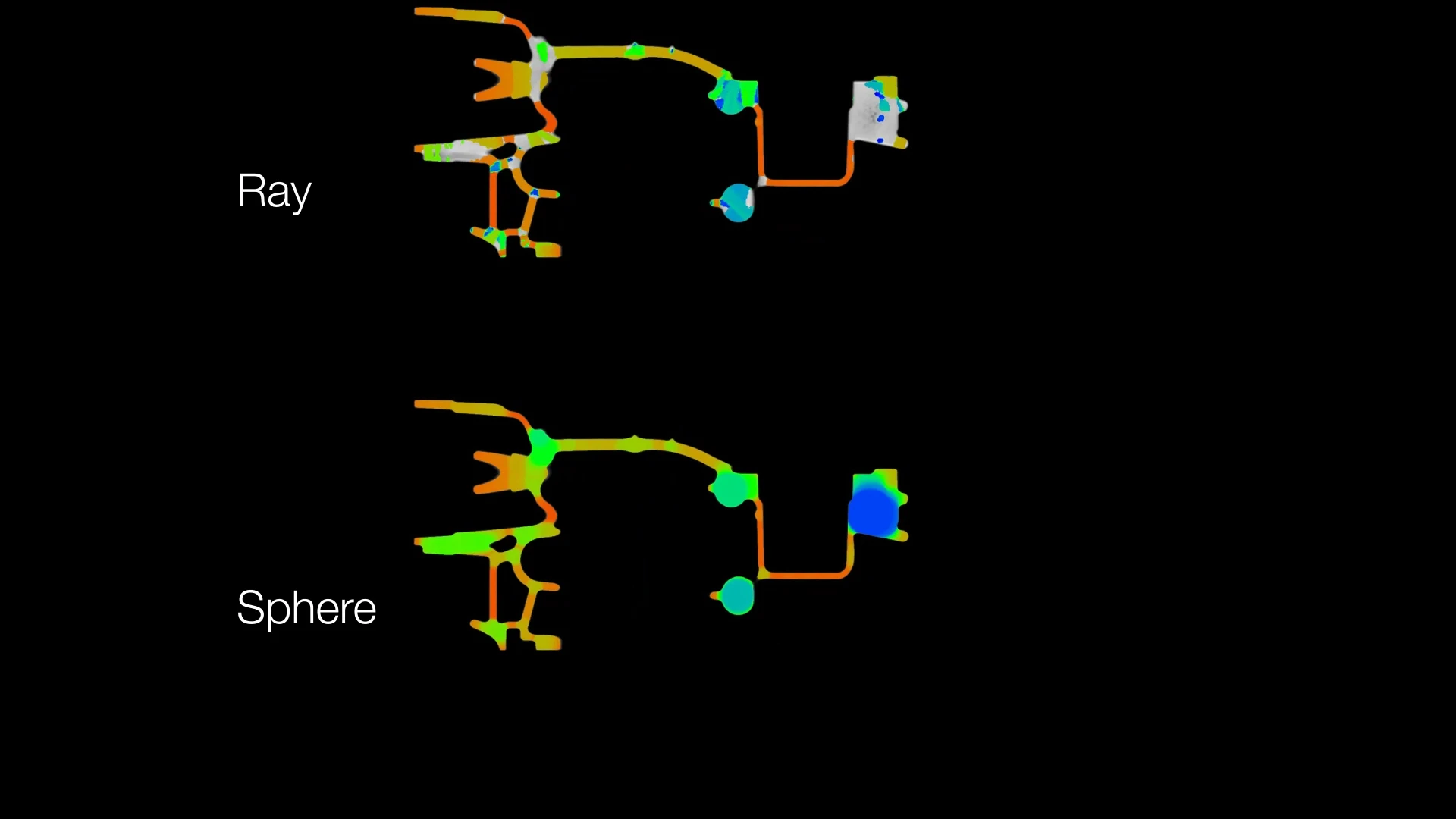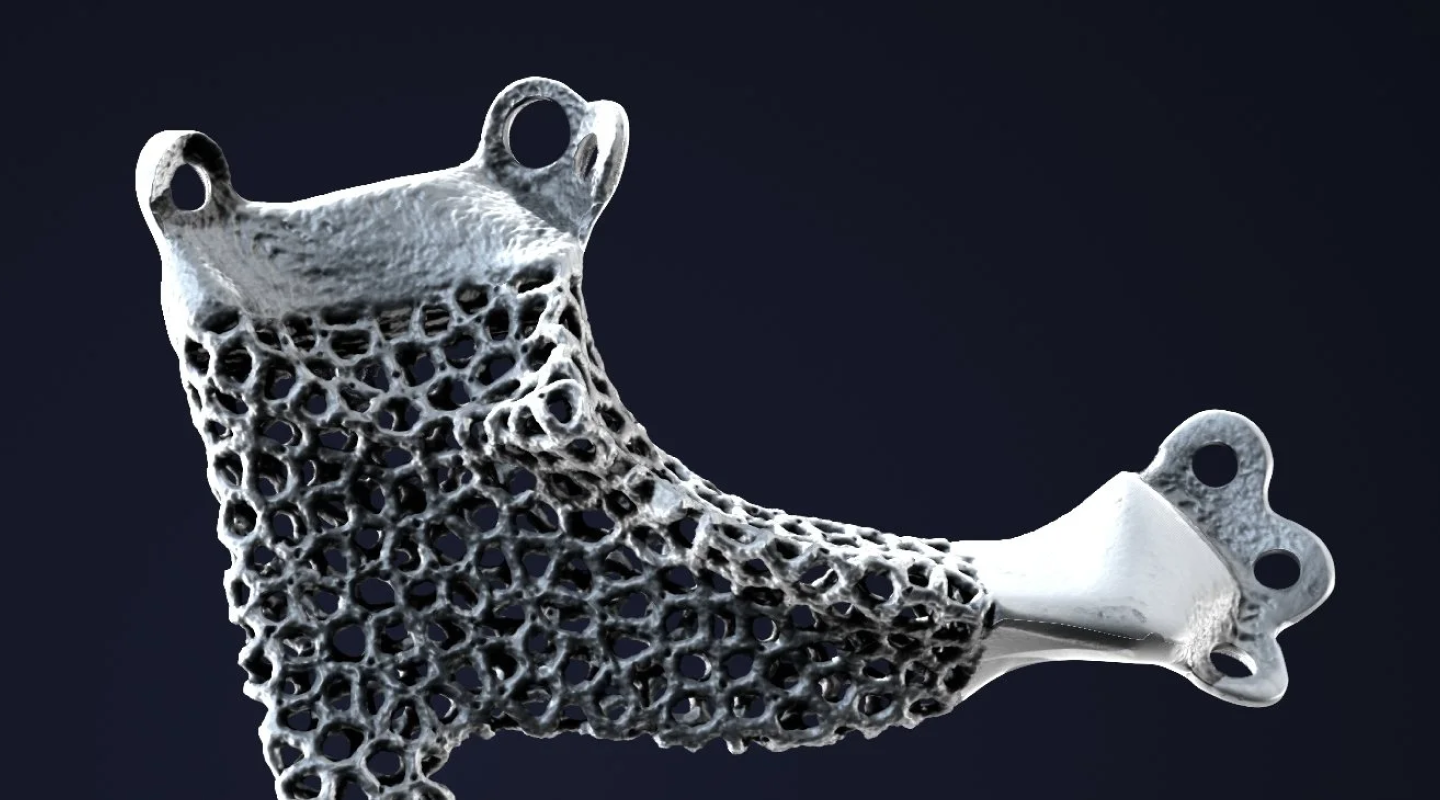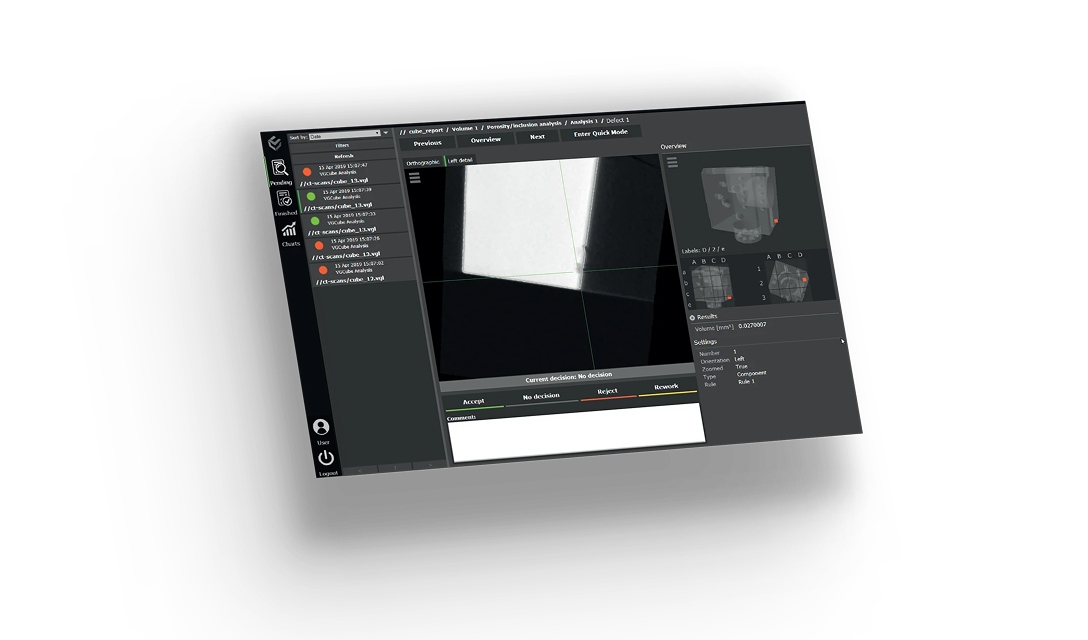As the name suggests, a wall thickness analysis is good for examining wall thicknesses—or inversely, gap widths—in an object. It is ideal for determining problem points in a part, such as where it will most likely break or cause malfunctions.
VGSTUDIO MAX offers two methods for a wall thickness analysis: the Ray method and Sphere method.
Ray Method
The Ray method is ideal for objects with smooth, parallel surfaces, such as industrial manufactured parts, which are often quite geometric.
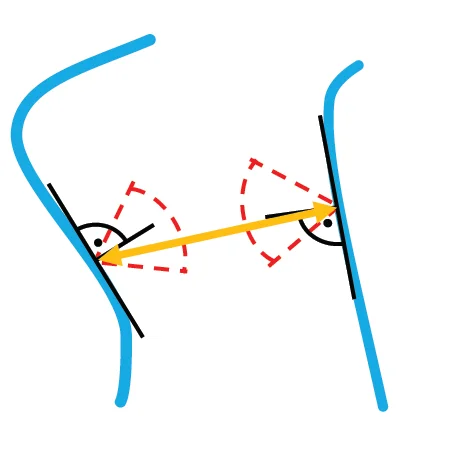
The Ray method is like an intense game of ping pong: the resulting thickness is the shortest distance between surfaces.
The algorithm takes a point on the surface and searches for the smallest distance to the opposite surface within a given search angle. From the other side, it tries to find its way back to the original point. Think of an intense game of ping pong: as long as players can catch the angle and reflect the hit – the game (wall thickness measuring) goes on.
Sphere method
The Sphere method, by contrast, is perfect for objects that are a bit more complex. It can reach areas missed by the Ray method.
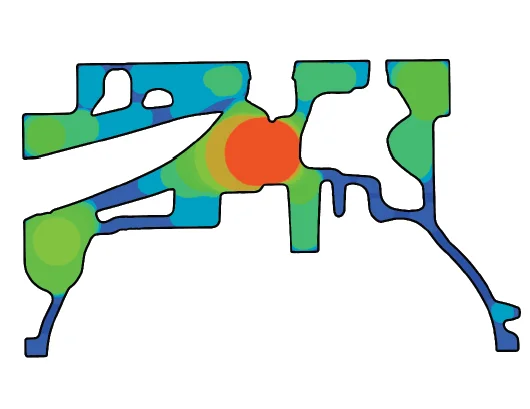
The sphere method creates spheres at each position and tries to determine the largest sphere
It creates spheres at each position and tries to determine the largest sphere. As each point can yield a sphere, this method has the advantage of being able to calculate a wall thickness at each position. Think of blowing up balloons in a confined space, taking the largest one, and filling in the gaps with more balloons.
Sound a bit abstract? Let's check out an oil filter housing used in engine bays of cars. It connects the oil filter to the engine by securing it in one place. One half of the housing was examined using the Ray method, while the other was analyzed using the Sphere method.
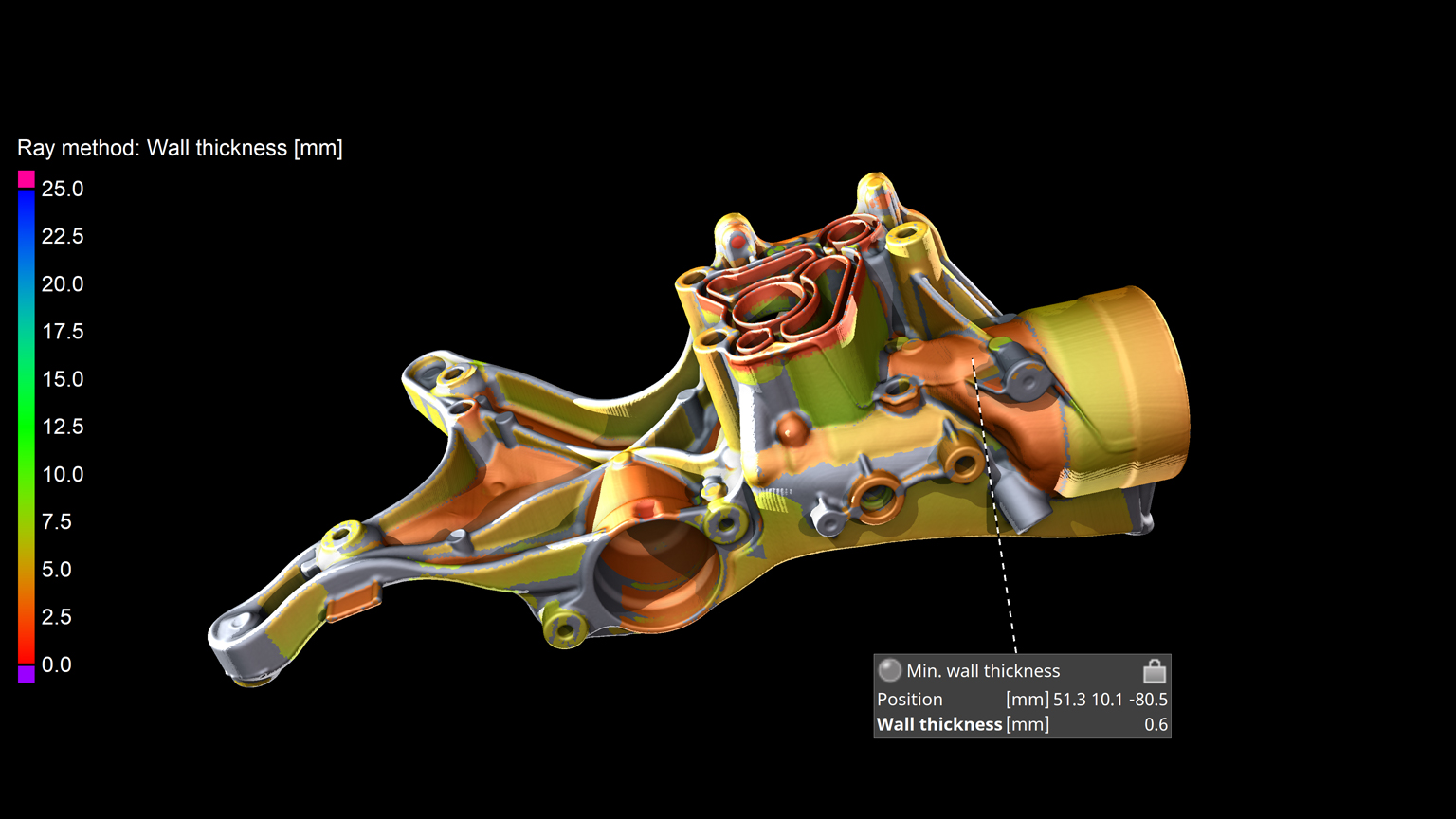
Ray method
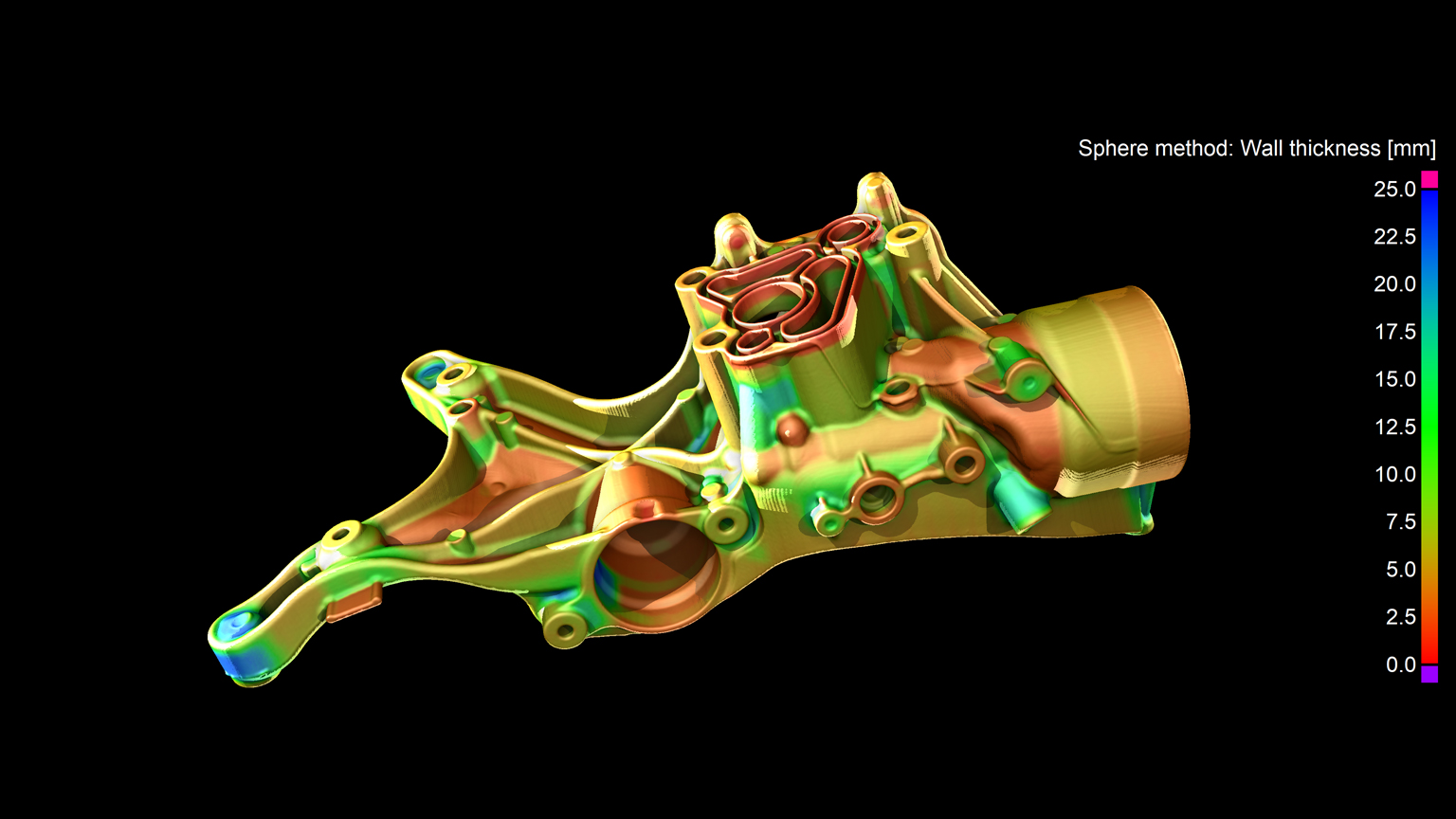
Sphere method
The Ray method can also provide the minimum and maximum wall thicknesses as an annotation—just tick the annotations box in the dialog!—while the Sphere method shows diameters of fillets, which is useful for reverse engineering. Just divide the values by 2 and you get the radius.
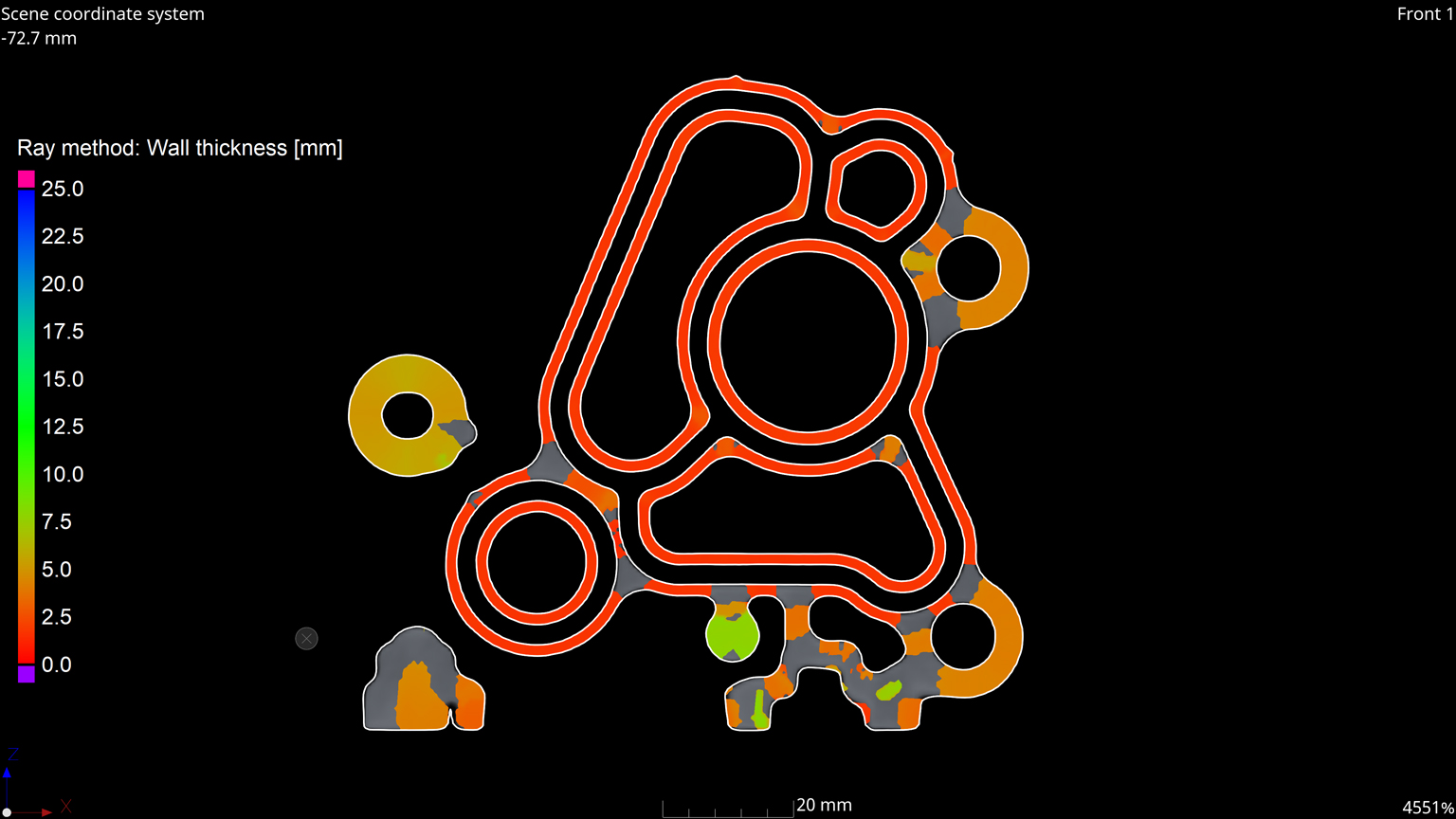
Ray method
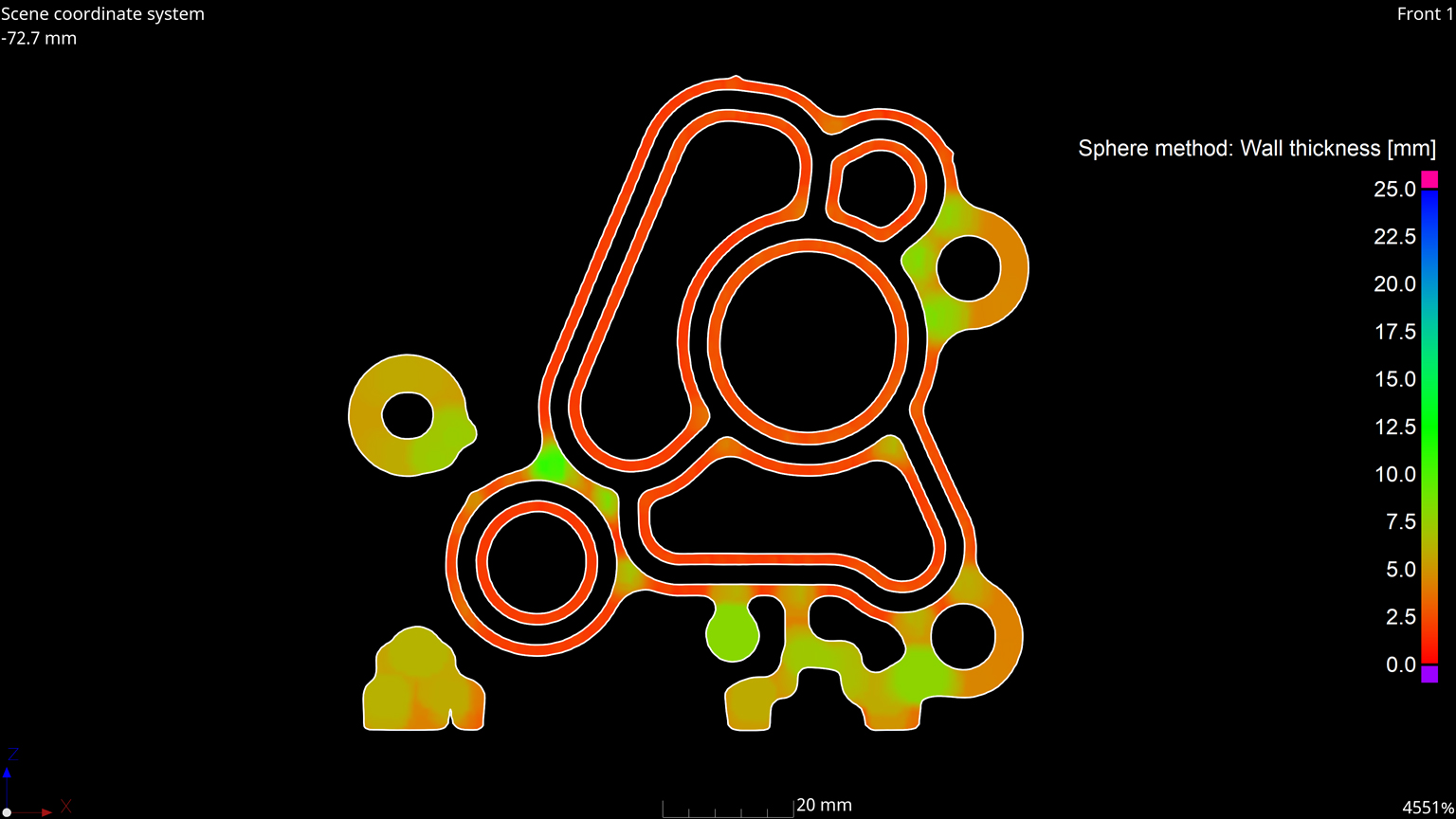
Sphere method
If we want to find several thin pieces in a part, we need to work with components and rule-based annotations.
Components are useful if we want to examine a particular range of wall thicknesses. For the Ray method, components are created automatically, as the algorithm will always have areas without a calculated wall thickness. For the Sphere method, we can set a defined wall thickness range to calculate components, since this method determines wall thickness at every position.
Through Thick and Thin
We have just performed and visualized a wall thickness analysis on an oil filter housing and compared two methods: Ray and Sphere. While the Ray method is often used on industrial manufactured parts because of their smooth, parallel surfaces, the Sphere method handles more complex shapes and reaches areas missed by the Ray method.
Have any experiences, tips, or tricks with wall thickness analysis? Let us know!

